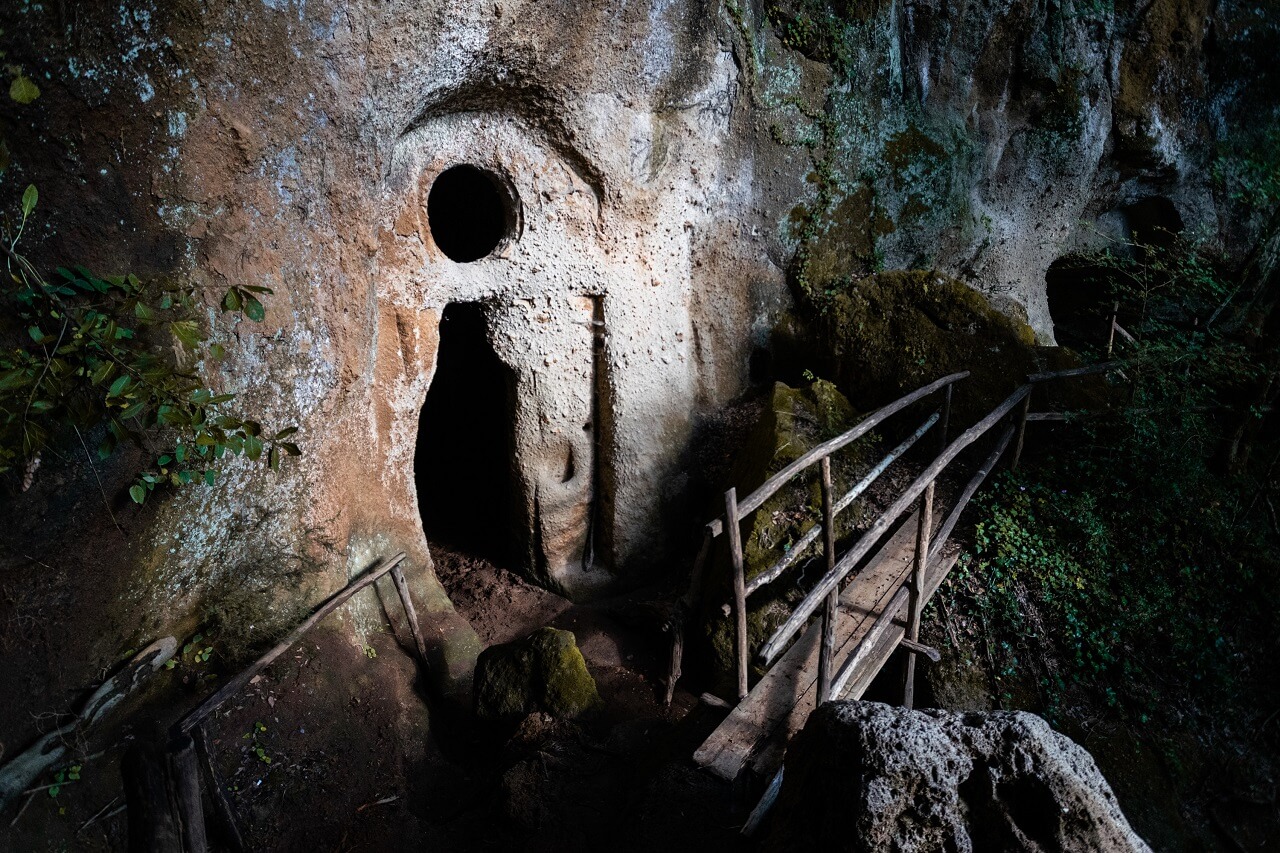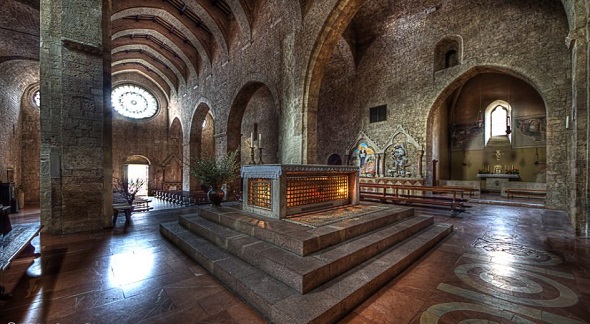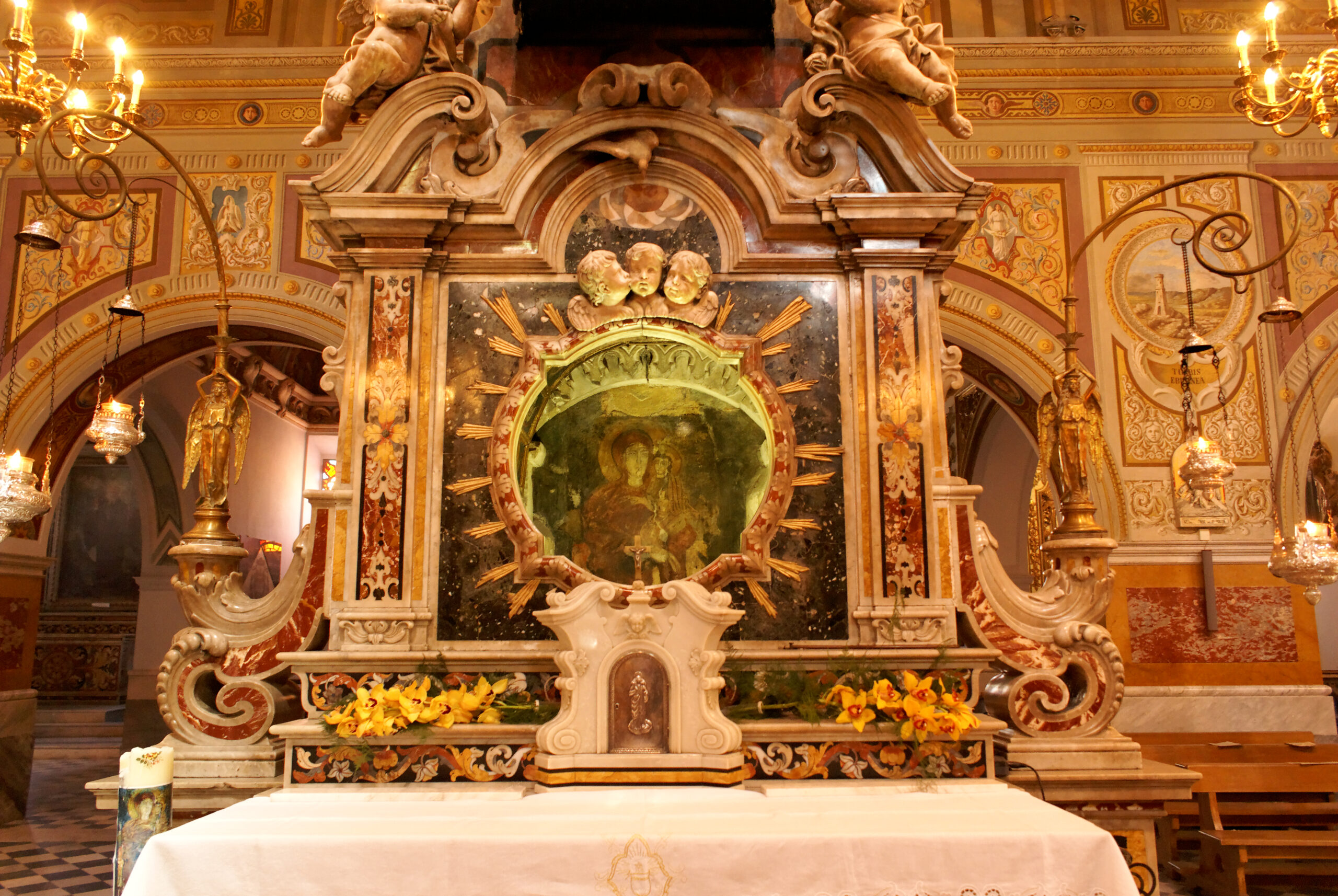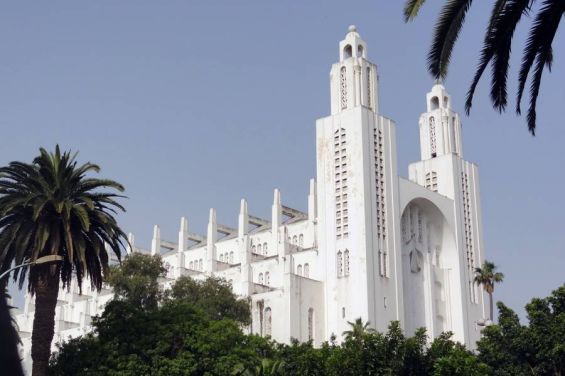The place lends itself well to exploration, to walks that are not at all demanding and that run along the river Fiora and its tributaries; through oak woods and overcoming gorges and tufa cliffs where the action of water and time have shaped the limestone territory into caves and caverns. In this natural context, wild and luxuriant, there is the hermitage of Poggio Conte and, not far away, the other rocky hermitages of the Fiora valley: Ripatonna Cicognina and the rock complex of Santa Lucia.
The various underground settlements used since Etruscan times, as places of worship and funeraries, were the object of a human presence continued during the Middle Ages until the 18th century. The area in which the hermitage of Poggio Conte stands today is in a defiladed position with respect to the major tourist flows that invade, about forty kilometers to the west, the Tyrrhenian coast of Argentario. The via Clodia, a minor artery among the most famous via Aurelia and via Cassia, passed through these parts, allowing goods and people to travel from the capital to Saturnia and further north to Roselle. A connecting road also known as via delle terme and whose origin is probably Etruscan; then readapted in Roman times (225 B.C.) with a stone pavement and the installation, along the way, of post stations (mansiones).
The hermitage of Poggio Conte and the other rock hermitages of the Fiora valley were born and developed in this wild territory where water naturally dug the limestone rock and where the tuff can be easily shaped into niches and dwellings, chapels, columns and roads like the famous hollow streets of the Etruscan period. The presence of monks and hermits at the hermitage of Poggio Conte (10th-13th century) is placed in a political and spiritual context that sees in the return to the evangelical dictates a recovery of the original message of Christ and in a sylvan hermitage, the return to a more authentic existence: in communion with the spirit and nature.













